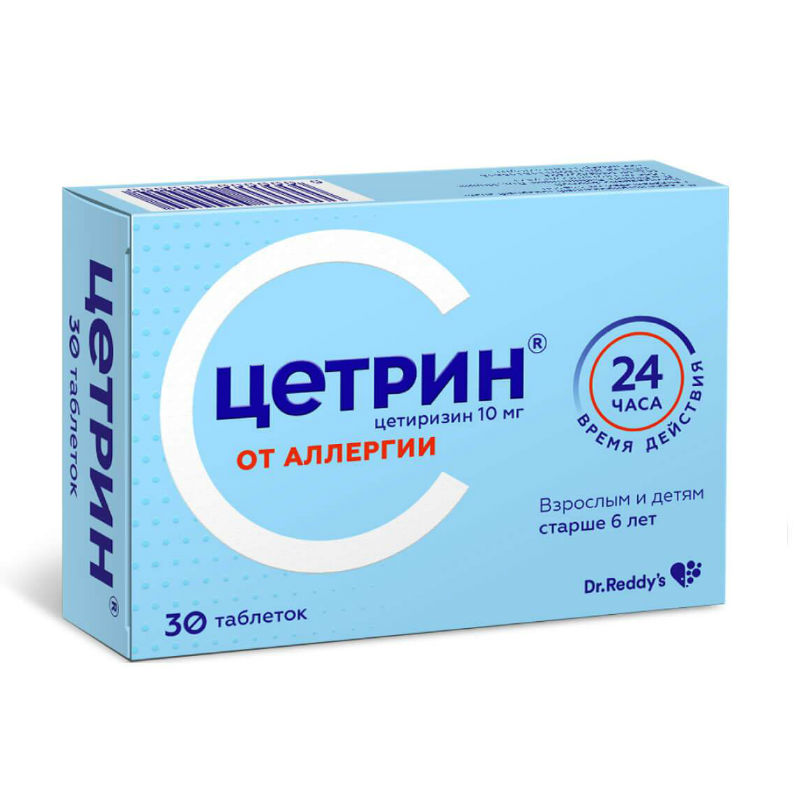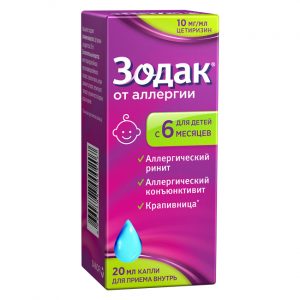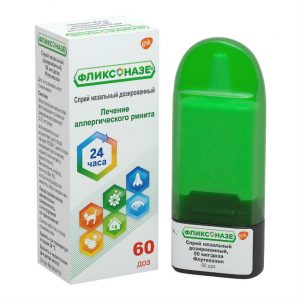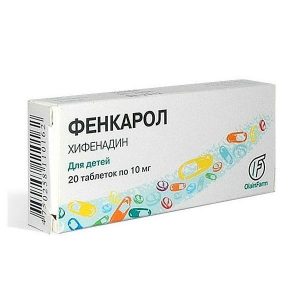Description
Description
Round biconvex tablets, film-coated, white or almost white, with a risk on one side.
On a cross-section, the core is white to almost white.
Latin name
CETRINE
Release form
film-coated tablets.
Packing
30 pcs
Pharmacological action of
Pharmacodynamics of
A competitive histamine antagonist, a metabolite of hydroxyzine, blocks H1-histamine receptors.
Prevents the development and facilitates the course of allergic reactions, has an antipruritic and antiexudative effect.
Affects the early stage of allergic reactions, limits the release of inflammatory mediators in the “late” stage of an allergic reaction, reduces the migration of eosinophils, neutrophils and basophils.
Reduces the permeability of capillaries, prevents the development of tissue edema, relieves spasm of smooth muscles.
Eliminates the skin reaction to the introduction of histamine, specific allergens, as well as cooling (with cold urticaria).
Reduces histamine-induced bronchoconstriction in mild bronchial asthma.
Virtually no anticholinergic and antiserotonin effects.
In therapeutic doses, it practically does not cause a sedative effect.
Onset of effect after a single dose of 10 mg of cetirizine – 20 minutes, lasts more than 24 hours.
Against the background of the course of treatment, tolerance to the antihistamine action of cetirizine does not develop.
After discontinuation of treatment, the effect lasts up to 3 days.
Pharmacokinetics
Quickly absorbed from the gastrointestinal tract, the time to reach maximum concentration (TCmax) after ingestion is about 1 hour.
Food does not affect the absorption capacity (AUC), but prolongs TCmax by 1 h and reduces the maximum concentration (Cmax ) by 23%.
When taken at a dose of 10 mg once a day for 10 days, the equilibrium concentration of the drug (Css) in plasma is 310 ng / ml and is observed 0.5 ² 1.5 hours after administration.
Communication with plasma proteins is 93% and does not change at a concentration of cetirizine in the range of 25 ² 1000 ng / ml.
The pharmacokinetic parameters of cetirizine change linearly when administered at a dose of 5-60 mg. Distribution volume – 0.5 l / kg.
Metabolized in small amounts in the liver by O-dealkylation to form a pharmacologically inactive metabolite (unlike other blockers of H1-histamine receptors metabolized in the liver by the cytochrome P450 system). Cetirizine is not cumulated.
About 2/3 of the drug is excreted unchanged by the kidneys and about 10% – with feces.
Systemic clearance – 53 ml / min.
The half-life (T1 / 2) in adults is 10 hours, in children 6-12 years old – 6 hours, 2-6 years old – 5 hours, 0.5-2 years old – 3.1 hours.
In elderly patients T1 / 2 increases by 50%, systemic clearance decreases by 40% (decreased renal function).
In patients with impaired renal function (creatinine clearance below 40 ml / min), the clearance of the drug decreases, and T1 / 2 lengthens (for example, in patients on hemodialysis, the total clearance is reduced by 70% and amounts to 0.3 ml / min / kg, and T1 / 2 is extended by 3 times), which requires a corresponding change in the dosage regimen.
Almost not removed during hemodialysis.
In patients with chronic liver diseases (hepatocellular, cholestatic, or biliary cirrhosis), a T1 / 2 elongation of 50% and a decrease in overall clearance by 40% are observed (correction of the dosage regimen is required only with a concomitant decrease in glomerular filtration rate).
passes into breast milk.
Indications
Seasonal and perennial allergic rhinitis
allergic conjunctivitis
hay fever
urticaria, including chronic idiopathic urticaria
itchy allergic dermatitis dermatitis dermatitis dermatitis dermatitis dermatitis dermatitis dermatitis
Contraindications
Hypersensitivity (including to hydroxyzine)
pregnancy, the period of breastfeeding
children’s age up to 6 years (for this dosage form).
Precautions: Chronic renal failure (moderate and severe – requires dosage adjustment), advanced age (possibly reduced glomerular filtration).
Use during pregnancy and lactation
Pregnancy
When analyzing prospective data on pregnancy outcomes, there were no cases of the formation of malformations, fetal and neonatal toxicity with a clear causal relationship.
Animal studies have not revealed any direct or indirect adverse effects of cetirizine on the developing fetus (including in the postnatal period), during pregnancy and childbirth.
There have been no controlled clinical trials on the safety of the drug during pregnancy, so cetirizine should not be used during pregnancy.
Breastfeeding
Cetirizine is excreted in breast milk in a concentration representing from 25% to 90% of the concentration of the drug in blood plasma, depending on the time of appointment. During breastfeeding, the drug is used after consulting a doctor if the expected benefit to the mother outweighs the potential risk to the baby.
Fertility
Available data on the effects on human fertility are limited, but no adverse effects on fertility have been identified.
Special instructions
If you exceed a dose of 10 mg / day, your ability to react quickly may worsen.
At recommended doses, it does not enhance the action of ethanol (at a concentration of not more than 0.8 g / l), however, it is recommended to refrain from using it during treatment.
For children (from 2 years old) Cetrin ® is used in the form of a syrup.
During the treatment period, care must be taken when driving vehicles and engaging in other potentially hazardous activities that require increased concentration of attention and speed of psychomotor reactions.
Composition
Each film-coated tablet contains:
Active ingredient: cetirizine dihydrochloride 10 mg.
Excipients: lactose, corn starch, povidone (K-30), magnesium stearate film coating: hypromellose, macrogol 6000, titanium dioxide, talc, sorbic acid, polysorbate 80, dimethicone.
Dosage and administration
Inside, regardless of food intake, without chewing, tablets are washed down with 200 ml of water.
Adults – 10 mg (1 tab.) 1 time per day or 5 mg (1/2 tab.) 2 times a day.
Children over 6 years of age – 5 mg (1/2 tab.) 2 times a day or 10 mg (1 tab.) 1 time per day.
In patients with reduced renal function (creatinine clearance of 30 49 ml / min), 5 mg / day is prescribed (1/2 tab.),
in severe chronic renal failure (creatinine clearance of 10-30 ml / min) – 5 mg / day (1/2 tab.) every other day.
Side effects
Usually Cetrin ® is well tolerated.
In some cases, it is possible:
drowsiness, dry mouth rarely – headache, dizziness, migraine, discomfort in the gastrointestinal tract (dyspepsia, abdominal pain, flatulence), allergic reactions (angioedema, rash, hives, itching).
Drug Interaction
There is no data on the interaction of cetirizine with other medicines so far, however, caution should be exercised when administering the drug with sedatives.
Overdose
Symptoms:
drowsiness with significant drug overdose (30-40 times the therapeutic dose in adults and children) – drowsiness, anxiety, itching, rash, urinary retention, fatigue, tremor, tachycardia.
In all cases, a complete normalization of the state was observed.
Treatment:
gastric lavage if necessary – symptomatic therapy.
There is no specific antidote.
Hemodialysis is ineffective.
Storage Conditions
At a temperature not exceeding 25 ° C.
Keep out of the reach and sight of children!
Expiration
2 years.
active substance
cetirizine




